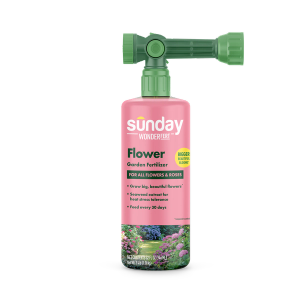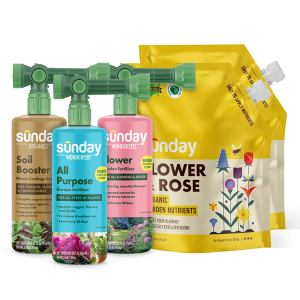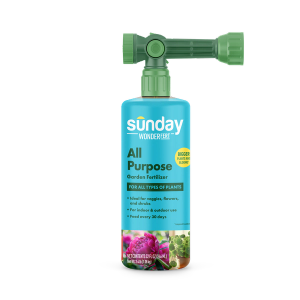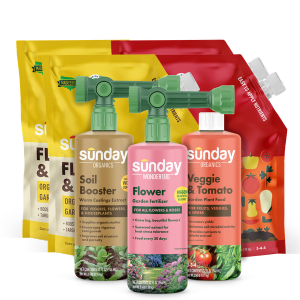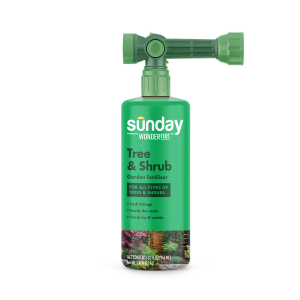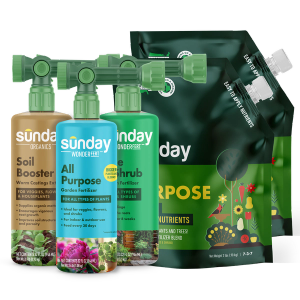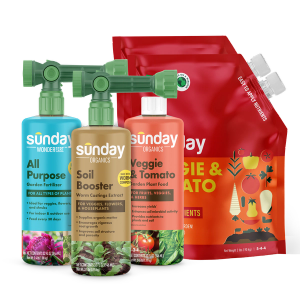Why are native plants important?
Providing a native wildflower habitat is one of the best things you can do to support pollinators. What’s good for your yard is good for the planet, and adding pollinator plants will help increase habitat and boost eco health. Native plants reduce the need for pesticides by out-competing weeds, and they require less watering once they are established—so they will help conserve resources. Ready to go native? Read on.
How to pick native plants for your yard
In order to select the most suitable plants you need to consider climate, regional, and environmental factors prior to planting. Here’s a quick checklist before you get started.
Where do you live? Whether you’re in the southwest, northwest, midwest, southeast, or northeast, you have native plants best suited to your region. Check out our favorites below.
Is your yard sunny or shaded? Native plants need different levels of sunlight. Use our guides below to select the best species for your light levels.
What type of soil do you have? Different plants need different levels of moisture. Make sure you check your planting area before picking out species.
Is the ground wet or dry? Choose native plants based on moisture needs for your area or habitat.
How much space do you have? Map out your plans before putting them in the ground. And remember, they will spread out over time so make sure to account for growth—up and out.
What types of pollinators do you want to attract? You can select plants based on what type of pollinators you’d prefer to see in your yard.
Native plants by region
Native plants by definition are regional, so make sure to pick plants that are best for your area. Below are some of favorites with a variety bloom times, colors, sizes, and sun requirements for each growing region.
Southwest Region
Even though the southwest has extreme temperature ranges and a dry climate, there are plenty of resilient and powerful pollinator plants that you can start growing right in your own backyard.
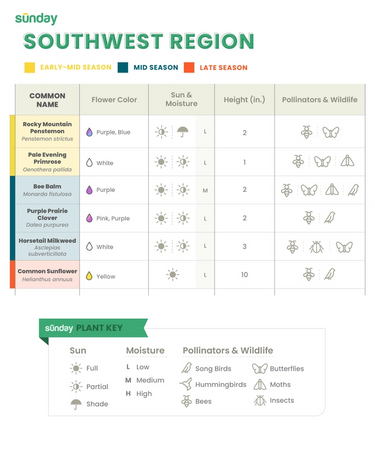
Northwest Region
The northwest is a plant-rich region. With higher levels of annual rainfall, the northwest has enough biodiversity to support some wildlife in some of the nation’s most wild forests and mountains. There are a lot of great trees, shrubs, and plants that you can grow to help boost the local ecosystem.
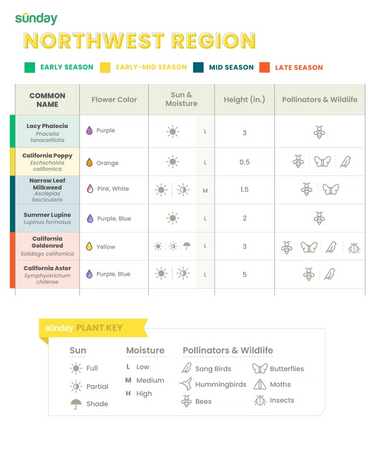
Midwest Region
From the forests to the tall-grass prairies and plains, the midwest has a variety of beautiful and effective pollinator plants to explore. A rich four-season climate, it hosts thousands of species of pollinators like butterflies and bees, as well as a wide range of bird varieties looking for a yard to make their home.
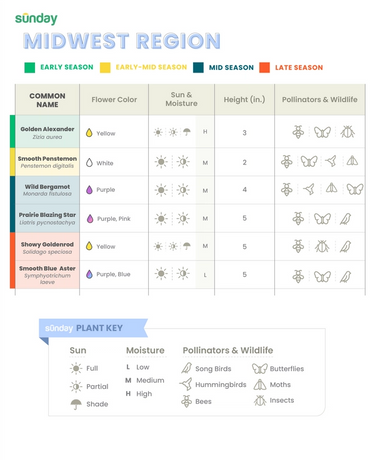
Northeast Region
The northeast is a robust region with plenty of moisture and a wide variety of native plants. From the Appalachian highlands to the Atlantic shoreline, there is an abundance of diverse animals, insects, and plant life to tap into.
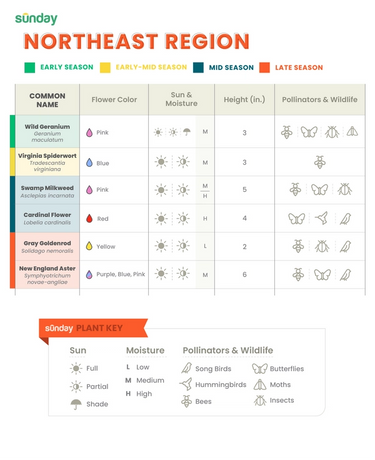
Southeast Region
From the stunning coastal marshes to the delta, the southeast is overflowing with diverse plant and animal communities. With some areas experiencing year round growth, there are a variety of native plants that can help turn your backyard into a pollinator sanctuary.
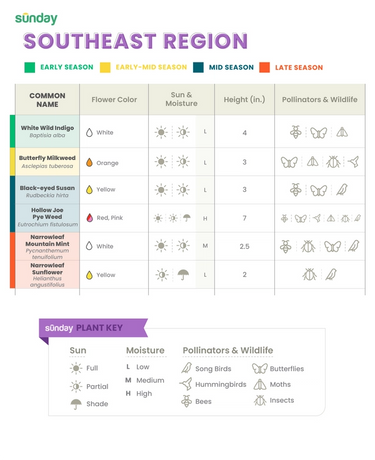
How to buy native plants
Many commercial home garden centers and landscaping companies are not able to provide "true" native plants. They typically sell cultivars or “nativars,” a genetically modified variety of a native plant. Not only are these plants more susceptible to disease, but also they are less beneficial to pollinators because they aren’t true native plants. Where a true native plant might support 200 pollinators, these genetically modified flowers will typically only support 20–80 pollinators, many of which aren’t even native pollinators.
Cultivar: cul·ti·var /ˈa plant variety that has been produced in cultivation by selective breeding.
Nativar: nav-ti-var / a cultivar of a native species.
We recommend purchasing native plants with the help of your local extension office or through local native plant societies. These institutions are dedicated to increasing habitat for pollinators and improving the availability of native plants. Not only will they be able to connect you with a good local native plant seller, but also your purchase will go back to local conservation efforts.
Enjoy the biodiversity of native plants
Biodiversity is the spice of life and wherever you live, there is an entire ecosystem of plant, insect, and bird life waiting to be explored.
For more information, check out our 1% For the Planet Partners at the National Audubon Society. They have a lot of great information on regional pollinators and birds in your area.
And once you’re ready to start planting, check out our tips on Wildflower Planting and Care.
Cited sources
Choosing the Right Plant Materials. USDA.
How to Buy Native Plants. National Audubon Society.
How to Make Your Yard Bird-Friendly. National Audubon Society.
Lady Bird Johnson Wildflower Center. The Botanic Garden of Texas.
Pollinator-Friendly Native Plant Lists. Xerces Society.







